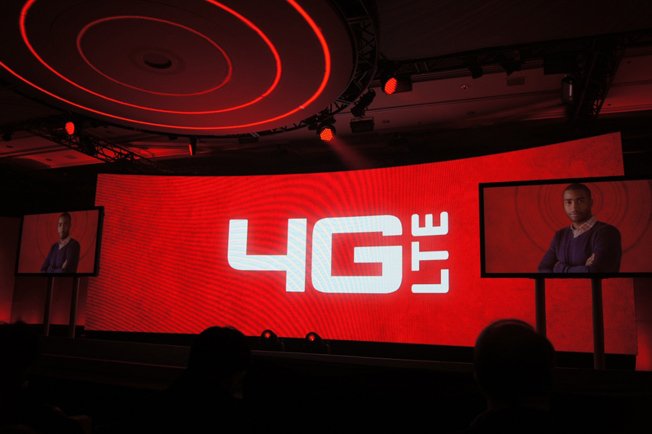The nation’s largest wireless carrier plans to complete its 4G LTE build-out by the middle of 2013, according to Verizon (VZ) CFO Fran Shammo. The company previously announced that its high-speed LTE network would match its 3G footprint by December of 2013. As of the end of the third quarter, Verizon reported that 35% of its overall data traffic was coming from 14.9 million postpaid LTE devices running on its network, which covers 80% of the U.S. population, or 250 million people across roughly 400 markets. Speaking at the Wells Fargo Securities Technology, Media & Telecom Conference on Thursday, the executive said after early hiccups that caused major service outages earlier this year, the company’s LTE network is now stable and reliable.
“You can see that people are massively migrating to that network,” Shammo said.
Verizon’s 4G LTE network has been praised by analysts and consumers alike for its vast coverage and fast data speeds, and the carrier’s competition in the LTE landscape continues to lag behind. AT&T (T) recently announced plans to invest $14 billion over the next three years to improve its 4G LTE network, which is expected to cover 300 million Americans by 2014. Sprint’s (S) high-speed network is still in its infancy and is currently available in just 24 markets around the country, while T-Mobile’s planned LTE network is still in development.
Shammo continues to be an advocate of a strong third mobile platform to ensure innovation in the industry continues, and also to ensure Apple (AAPL) and Google (GOOG) don’t gain too much control. In a perfect world, the executive would love to see Microsoft’s (MSFT) mobile operating system do just that.
“When you have competition then the innovation just elevates itself,” he said. “I would love to see the Windows [Phone] 8 platform be a successful platform.”
Verizon’s Share Everything data plans continue to be a success, the executive revealed, with more than 13% of Verizon’s customer base now on the new plans. Shammo did note that some customers have forgone subsidized smartphones, however, and instead chosen to pay the full cost of their devices to keep their unlimited data plans.




